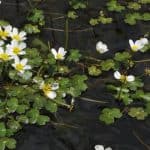Last updated on March 9th, 2022
Our site is reader supported, this means we may earn a small commission from Amazon and other affiliates when you buy through links on our site.
Ornamental grasses have grown in popularity over the last few years, not just because they are very low maintenance, but because they grow well in less than ideal soil conditions. Moreover, they are resistant to most pests and diseases which is a huge bonus, they grow quickly to fill a given space, and lots of types offer something of visual interest the entire year.
There is truly a form of ornamental grass for any type of garden or garden theme. You can find evergreen or deciduous varieties of ornamental grasses, ranging in height to fit all of your needs, be it a 30cm tall ornamental grass for the edges of borders and pots or grasses that reach up to four metres that make a great focal point. You can combine different ornamental grasses as your specimen plants, for your container displays, or be part of an otherwise busy garden border collection. Primarily known for the foliage they provide, ornamental grasses also offer some rather spectacular flowers.
Where to Grow Ornamental Grasses
Given that there are so many types of ornamental grasses from which to choose you can truly find a variety for any position in your garden. If you have a spot in your garden that is usually warm and dry you can grow the Festuca variety. If you have an area that’s heavily shaded perhaps underneath a tree with soil that is very water retentive, you can pick a variety of Acorus or Milium, however, do check that the variety you choose is suitable for your location.
If you live near the coast and you need to grow something that’s tolerant of sea air, select the Cortaderia, which is famous for its large white or pink flowers. If you have a pond and are looking for marginal grasses, you could try the Juncus. It is important to note that taller grasses need a location that is somewhat sheltered so that the taller flower spikes don’t get damaged by heavy wind, although Cortaderia is a very wind-resistant variety.
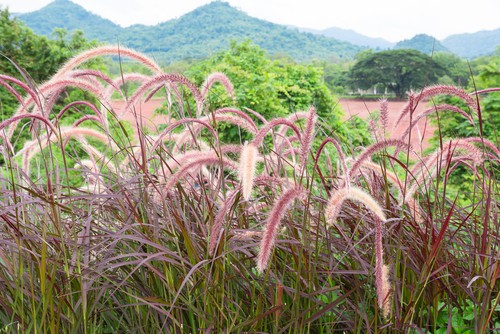
Growing Ornamental Grasses in Containers
You can, of course, choose to grow your ornamental grasses in containers which gives you the opportunity to cultivate any variety you desire. This is also ideal for people who don’t necessarily have an area where they can plant in the ground but instead have a raised patio or terrace upon which they wish to have ornamental grasses be displayed in all their glory.
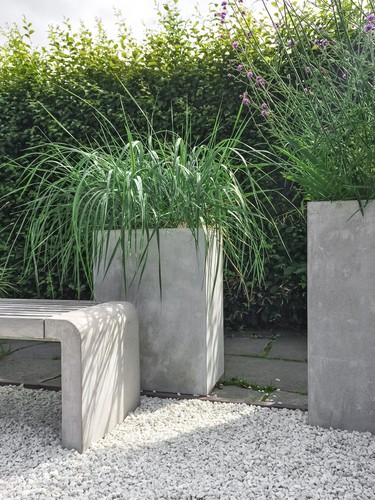
When you grow your ornamental grasses in a container, you simply want to be mindful of the size of the container because it relates to the root system of the grasses you want to grow. Place the containers where you want them to be permanently rather than planting and then trying to move a now heavy container somewhere else in your garden. Be aware of the location you choose because it relates to the type of grass you are growing, the amount of sun exposure, and wind exposure. A soil-based compost is usually ideal, something like a John Innes No2.
Planting Ornamental Grasses
You can plant ornamental grasses at any time throughout the year but it is recommended that you do it in the spring or the autumn if you have the opportunity. If you are growing a grass that prefers dry soil you can help keep the drainage at optimum levels by adding horticultural grit into the soil and mixing in well before you plant.
When you are ready, dig a hole and put the plants in the hole so that they reach the same depth they were in their original pot, never plant them any deeper because this can cause the plants to rot off. Backfill the hole and firmly pack down the soil so that you will alleviate any air bubbles. Once it has been planted you want to water it well to help the soil settle.
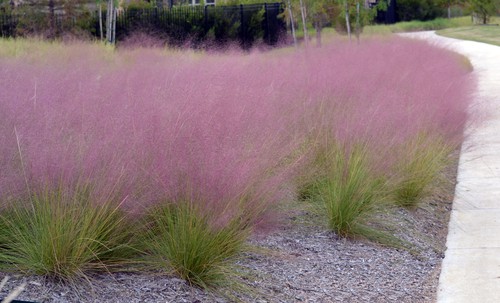
Most grasses are very low maintenance and once established they will thrive without any care, however, for the first 12 months check to see if they need watering, especially if planting during drier periods.
Pruning and General Care
Ornamental grasses are very low maintenance and don’t require regular feeding. Otherwise, in terms of general care, you can refer to the variety you have selected for any watering requirements but even this is minimal once they are fully established, with the exception of grasses grown in pots because these should be checked regularly.
For the pruning, if you have tall ornamental grasses or you see that the long flower stems have become messy or broken, you can cut them back at any time of year to keep them looking tidy. Again, ornamental grasses have next to no issues with diseases or pests so you won’t have to worry.
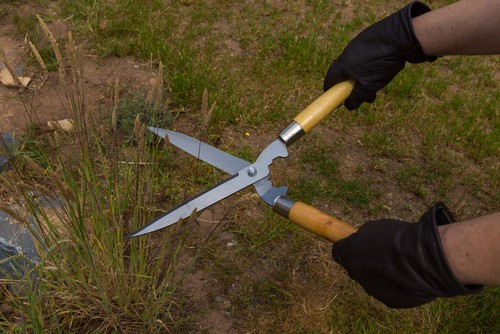
Winter Care
You can leave your ornamental grasses uncut throughout the winter. If you have a deciduous variety you should cut it back at the beginning of March because the foliage will help protect the root system during the winter. If you have an evergreen variety do not cut it back until April through July. The evergreen grasses don’t really need to be cut back all too heavily and will benefit more from a light trim to keep them looking their best. You can tidy up your evergreens by pulling out the older stems. Some of these grasses are sharp so if you are going to comb through them and pull out the older stems wear gloves. It’s usually better to use a good pair of secateurs or scissors to avoid damaging the plant.
Propagating Ornamental Grasses
Dividing grasses
One of the best ways to propagate grasses is by dividing established grasses you already have. You can divide your ornamental grasses at the beginning of spring. If you have a very mature clump of ornamental grass it can be somewhat difficult to lift it out of the ground. In order to divide and propagate larger clumps, you will need to dig the plant out of the ground and then use large garden spades placed directly into the crown of the plant, situated back-to-back. From there you can pull the two handles down to separate the clump and then replant both where you so choose. Sometimes you can get away with lifting a large clump and then simply just slicing it into small pieces with a single spade too.
Lift seedlings from grasses that have self-seeded
If you have grasses that self-seed, such as the Stipa tenuissima Pony Tails, simply keep your eyes peeled for the seedlings, and when you find them, simply carefully lift and pot on some of them on into small pots and grow on in a sheltered spot until established.
Recommended Varieties
There are hundreds of varieties of grasses but one of our favourites is the Miscanthus Flamingo. This is a deciduous grass that reaches 1-2m in height and spread with pink flowers at the end of summer that turns silver. They prefer full sun in moist but well-drained soil but will thrive in sheltered or exposed positions.
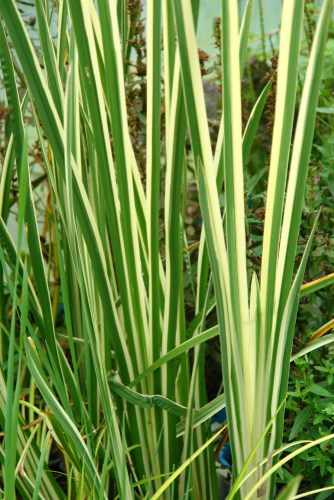
The Acorus variegatus is a popular variegated evergreen grass that reaches heights of only 25cm and thrives best in full sun or partial shade, making it perfect for container growing. If you have a pond it also grows well as a marginal pond plant in shallow water. Its tolerance for shallow water also makes it perfect for planting in wet or moist soils where many kinds of grass will not grow.
Another slightly larger grass that reaches a height of 50cm to 100cm is the Briza Golden Bee. This grass offers stunning flowers in the summer and is a golden semi-evergreen grass. It’s easy to grow in moist fertile but well-drained soil and needs full sun, however, it will thrive in both sheltered or exposed sites
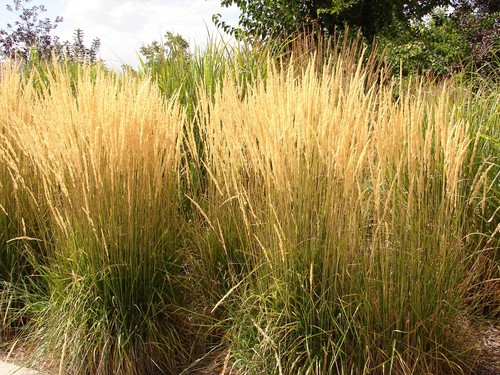
Calamagrostis Karl Foerster is a deciduous green grass that offers bronze flowers that later fade to brown, standing upright it reaches an impressive height of around 5ft making it one of the largest types. It grows well in most soils (except the very poorest) and will thrive in full sun or partial shade in sheltered or exposed sites.
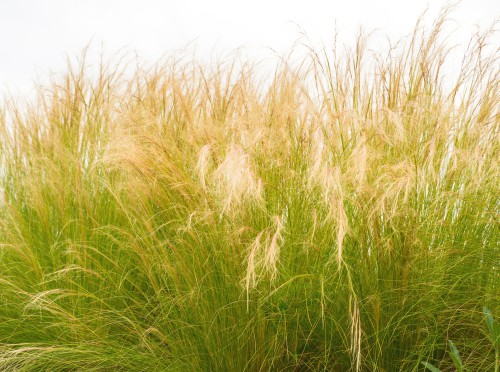
The Stipa tenuissima, also known as the Mexican feather grass, is a popular grass that has fine delicate foliage and feathery flowering panicles that will move very well in the wind without getting knocked over. It grows well in moist but well-drained soils and needs full sun to thrive in sheltered or exposed sites.
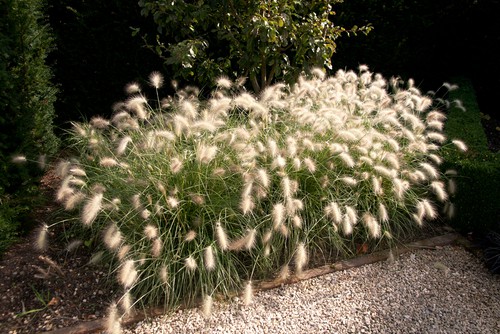
Pennisetum villosum, also known as Feathertop, is a deciduous grass that is one of the quintessential ornamental grasses with its bunny tail-like flowers that are soft and fluffy. It only grows to around 30-50cm and needs a sheltered position in well-drained soil.

